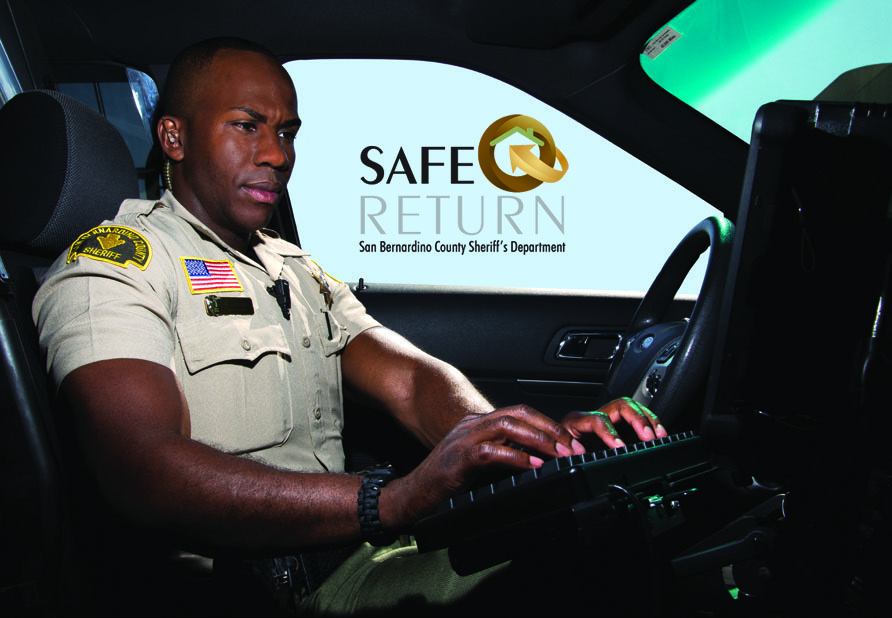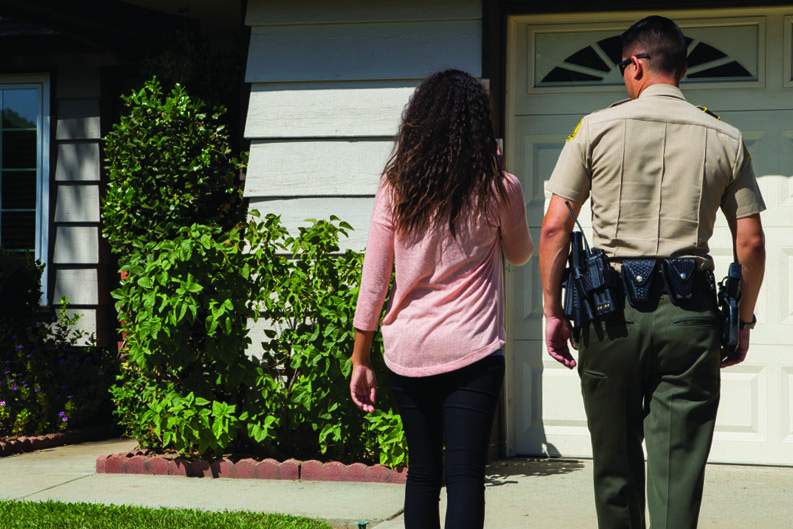Late last year I had the good fortune to meet Deputy Greg Jones from the San Bernardino Sherriff’s Department. I was attending a meeting hosted by the Autism Society of the Inland Empire and Deputy Jones was presenting on a program called Safe Return. Deputy Jones shared with us the origins of the program, as well as statistics on how the program is helping people with developmental disabilities and their families. Deputy Jones said it best when he shared, “The Safe Return Program is a confidential database that allows law enforcement access to critical information about the registered individual. Registering a loved one provides useful information to assist law enforcement in reuniting families.”
Inland Regional Center is happy to share this resource with families who can benefit from it. Here is some information on what the program is, how it works, and how to register.
What is the Safe Return program?
Safe Return is designed to assist law enforcement agencies when they encounter someone with an intellectual disability/developmental disability (ID/DD) who may need help returning home. It’s a voluntary program where a community member can provide information and a photo for law enforcement to have in the case their family member comes into contact with law enforcement officers. The goal is to promote communication and to give officers access to needed information about the person, to better assist them.
This program is currently offered in areas under the jurisdiction of the San Bernardino Sheriff’s Department. This program includes the following cities and unincorporated areas: Apple Valley, Barstow/Trona, Big Bear, Big Bear Lake, Central (unincorporated San Bernardino), Chino Hills, Colorado River, Fontana, Grand Terrace, Hesperia, Highland, Loma Linda, Morongo Basin, Needles, Rancho Cucamonga, Twentynine Palms, Twin Peaks, Victor Valley, Victorville, Yucaipa, and Yucca Valley.
How does it work?
Those who sign up give law enforcement a photo, physical descriptions, and contact information for their loved one/caregiver. Known routines, favorite attractions, and/or special needs of the individual, can also be entered at the time of registration. This information can assist law enforcement in communicating with, locating a residence for, or handling an emergency involving a person with an ID/DD that could be missing. This information can also be disseminated to field officers in helpful broadcast situations.
How to Sign-up
Those interested in signing up for the program can visit the Safe Return website. After creating an account, participants will be asked to provide information such as a physical description, diagnosis, behaviors, communication concerns, and emergency contact information. It is very important to also provide a good quality photo during the registration process. A good quality photo is current, close-up, well-lit, and contains only the person being enrolled in the Program.
It is important to note that a participant can be removed from the system, simply by filling out a Removal Request form on the program webpage.
Learn More
The San Bernardino Sherriff has several resources to help family members and caregivers learn everything they need to know about Safe Return.
Share this Post





